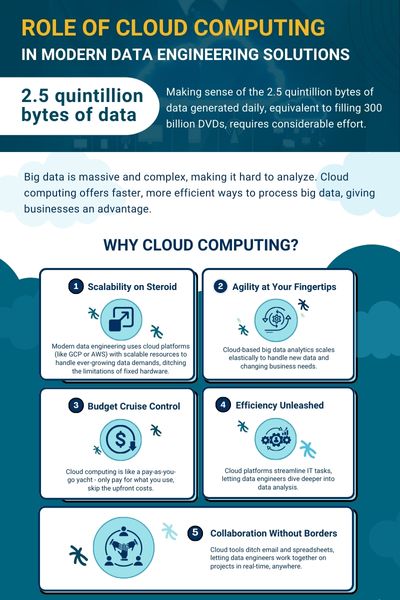Cloud Computing: Streamline Your Business Processes Effectively

In today's fast-paced digital environment, the efficiency and scalability of business operations are paramount. One technology that has emerged as a powerful tool for companies of all sizes is Cloud Computing. This transformative technology provides a framework for businesses to streamline processes, enhance flexibility, and manage resources effectively. Let's delve into how cloud computing can redefine the way your business operates and scales.
What is Cloud Computing?
At its core, cloud computing refers to delivering various computing services through the Internet. These services include data storage, processing power, applications, and more. Unlike traditional on-site data centers, cloud computing utilizes remote servers hosted on the Internet to manage, store, and process data.

Key Benefits of Cloud Computing
- Cost Efficiency: Businesses can save on upfront capital expenses for hardware, software, and facilities by using cloud services on a pay-as-you-go basis.
- Scalability: Cloud resources can be scaled up or down with demand, allowing businesses to adapt to market changes quickly.
- Flexibility and Mobility: Employees can access business applications and data from anywhere, enhancing remote work capabilities.
- Disaster Recovery: Cloud services often include built-in disaster recovery solutions, ensuring business continuity in case of data loss.
- Security: Leading cloud providers offer robust security measures, often surpassing the capabilities of many individual organizations.
Implementing Cloud Computing in Your Business
To integrate cloud computing into your business operations effectively, consider the following steps:
- Assessment: Evaluate your current IT infrastructure and determine your needs.
- Choose the Right Cloud Service: Decide between Infrastructure as a Service (IaaS), Platform as a Service (PaaS), or Software as a Service (SaaS) based on your requirements.
- Select a Provider: Compare providers like AWS, Microsoft Azure, Google Cloud, or others based on service offerings, compliance, and pricing.
- Migration Strategy: Plan for data migration with minimal disruption. Consider using cloud migration tools or services.
- Training: Ensure your team is trained on the new systems to maximize the benefits of cloud computing.
- Security Measures: Implement security protocols, access controls, and regular audits.
- Monitoring and Optimization: Use cloud analytics to monitor performance and optimize usage.
🛠️ Note: Not all applications or workloads are suited for the cloud; some may need to remain on-premises due to compliance, latency, or cost considerations.
Cloud Computing Models

| Model | Description |
|---|---|
| IaaS | Provides virtualized computing resources over the internet. |
| PaaS | Allows customers to develop, run, and manage applications without the complexity of building and maintaining the infrastructure. |
| SaaS | Applications are hosted by a third-party provider and accessed over the internet by users. |
Overcoming Challenges
Adopting cloud computing isn’t without its challenges:
- Data Security and Privacy: Ensuring compliance with various regulations like GDPR can be daunting.
- Integration with Legacy Systems: Seamless integration with existing infrastructure requires careful planning.
- Vendor Lock-in: Becoming too dependent on one provider might limit your ability to switch or negotiate better terms.
- Availability and Performance: Ensuring uptime and managing service levels is crucial for cloud operations.
💡 Note: A thorough cost analysis should consider not just direct costs but also indirect costs like staff training, downtime, and long-term strategic implications.
Case Studies: Real-World Examples
Here are a few examples of how businesses have transformed using cloud computing:
- Netflix: Transitioned from DVD rental to a streaming giant powered by AWS, allowing for rapid scaling and a vast content library.
- Airbnb: Leverages cloud services for its dynamic inventory and booking systems, enabling global scalability.
- Coca-Cola: Uses cloud analytics for predictive market analysis and supply chain optimization.
In conclusion, cloud computing represents a fundamental shift in how businesses can approach technology. By embracing this technology, companies can achieve greater operational efficiency, flexibility, and cost savings. This technology allows for seamless integration of new applications, enhanced data analytics capabilities, and the ability to innovate quickly in response to market demands. The key to successfully implementing cloud solutions lies in careful planning, choosing the right provider, and ongoing optimization of resources to ensure maximum benefit.
What are the main types of cloud computing services?
+The main types of cloud computing services are IaaS (Infrastructure as a Service), PaaS (Platform as a Service), and SaaS (Software as a Service).
Is my data safe in the cloud?
+Cloud providers typically offer strong security measures, including encryption, firewalls, and regular security audits. However, maintaining data security also involves organizational policies, access control, and user education on security practices.
How does cloud computing improve business agility?
+Cloud computing allows businesses to scale resources up or down based on demand, deploy applications faster, and work from any location, thereby increasing agility and responsiveness to market changes.



